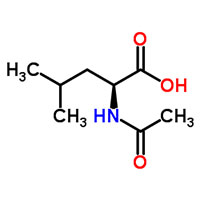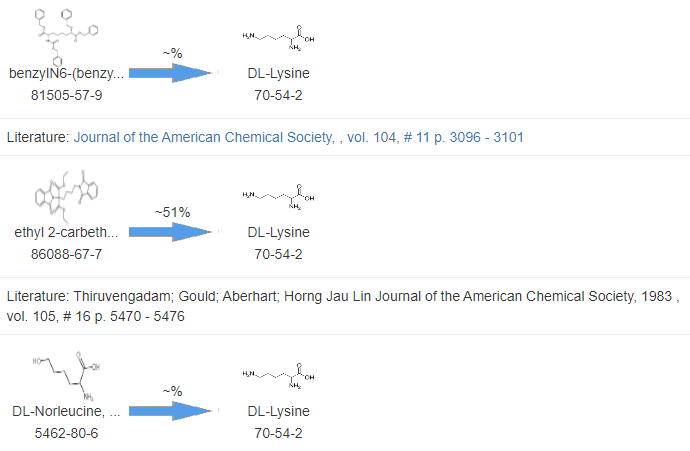Synonyms
(S)-N-Acetylleucine
N-Acetyl-L-leucine
(E)-N-(1-Hydroxyethylidene)-L-leucine
Leucine, N-acetyl-, L-
(S)-N-acetyl-leucine
EINECS 214-706-3
L-Leucine, N-acetyl-
L-Leucine, N-acetyl
(S)-2-Acetamido-4-methylpentanoic acid
Acetyl-L-Leucine
L-Leucine, N-(1-hydroxyethylidene)-, (E)-
MFCD00026498
Acetylleucine
Ac-Leu-OH
Product Description
Introduction:
N-Acetyl-L-leucine, commonly known as N-Acetylleucine or NAL, is a vital chemical compound with
significant applications in the chemical industry. This product introduction aims to provide an overview
of N-Acetyl-L-leucine, covering its raw materials, production process, market trends, and the current
status of amino acids in the industry.
Raw Materials:
N-Acetyl-L-leucine is synthesized through the combination of raw materials, primarily L-leucine and
acetic acid. L-leucine, an essential amino acid, serves as the precursor for NAL synthesis. Acetic acid,
commonly derived from petrochemical sources or fermentation processes, provides the acetyl group
necessary for the acetylation of L-leucine.
Production Process:
The production process of N-Acetyl-L-leucine involves the following steps:
Step 1: Extraction of L-leucine - L-leucine is typically obtained from natural sources, such as
protein-rich food products or fermentation of microbial cultures.
Step 2: Acetylation reaction - L-leucine is reacted with acetic acid in the presence of suitable
catalysts and reaction conditions to form N-Acetyl-L-leucine. The reaction may take place in a solvent
or in the solid state, depending on the specific manufacturing process.
Step 3: Purification and refining - The resulting N-Acetyl-L-leucine is purified using various
techniques, such as filtration, crystallization, and chromatography, to achieve the desired level of
purity.
Market Trends:
The market demand for N-Acetyl-L-leucine has been steadily increasing due to its versatile applications
across various industries. Here are some key market trends:
Pharmaceutical Industry: N-Acetyl-L-leucine finds extensive use in the pharmaceutical industry as a
pharmaceutical ingredient. It is utilized in the formulation of drugs and therapies targeting
neurological disorders, cognitive function, and vestibular disorders.
Nutraceuticals and Dietary Supplements: The demand for amino acid-based nutraceuticals and dietary
supplements is on the rise. N-Acetyl-L-leucine's inclusion in these products is driven by its potential
to support muscle growth, athletic performance, and overall well-being.
Chemical Research: N-Acetyl-L-leucine serves as a valuable compound in chemical research, specifically
in the development of new catalysts, ligands, and specialty chemicals. Its unique properties and
functional groups make it a valuable tool for synthetic chemists.
Current Status of Amino Acids:
Amino acids are essential building blocks in numerous industries, including pharmaceuticals, food
additives, animal nutrition, and agriculture. The market for amino acids continues to expand due to
their crucial role in protein synthesis and their diverse applications. Essential amino acids, such as
leucine, hold significant importance in the industry.
Conclusion:
N-Acetyl-L-leucine, derived from L-leucine, is a valuable compound in the chemical industry. Its
production involves the combination of raw materials and precise manufacturing processes. The market
demand for N-Acetyl-L-leucine is driven by its applications in pharmaceuticals, nutraceuticals, and
chemical research. Amino acids, including leucine, continue to play a vital role in various industries,
and N-Acetyl-L-leucine maintains its position as a valuable chemical compound with wide-ranging
applications.






